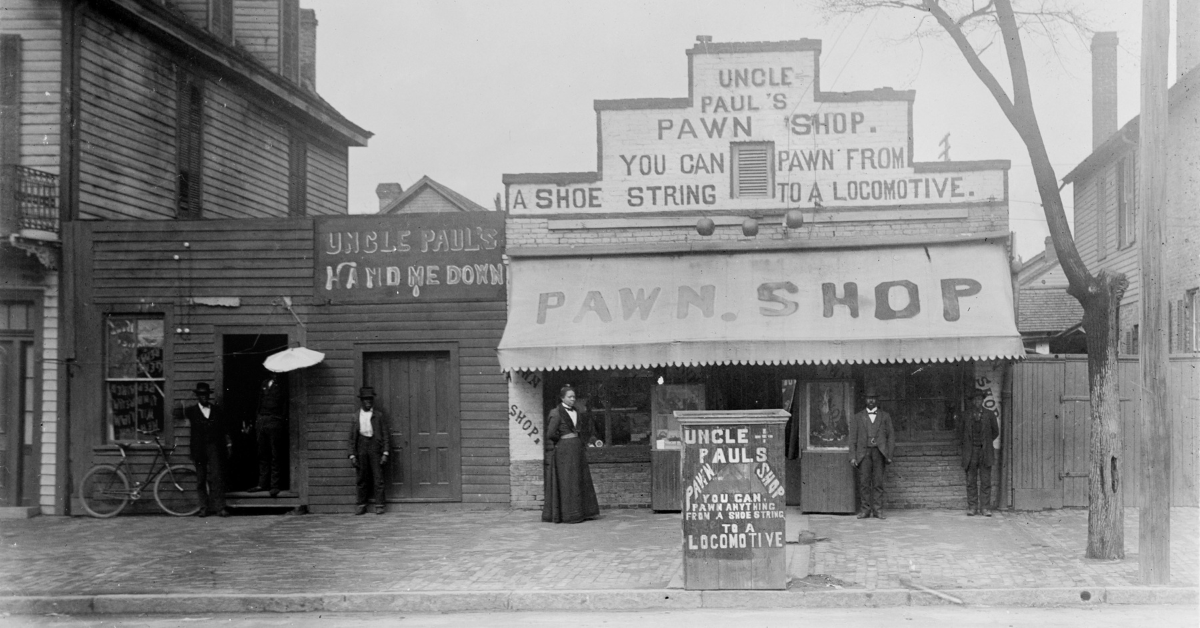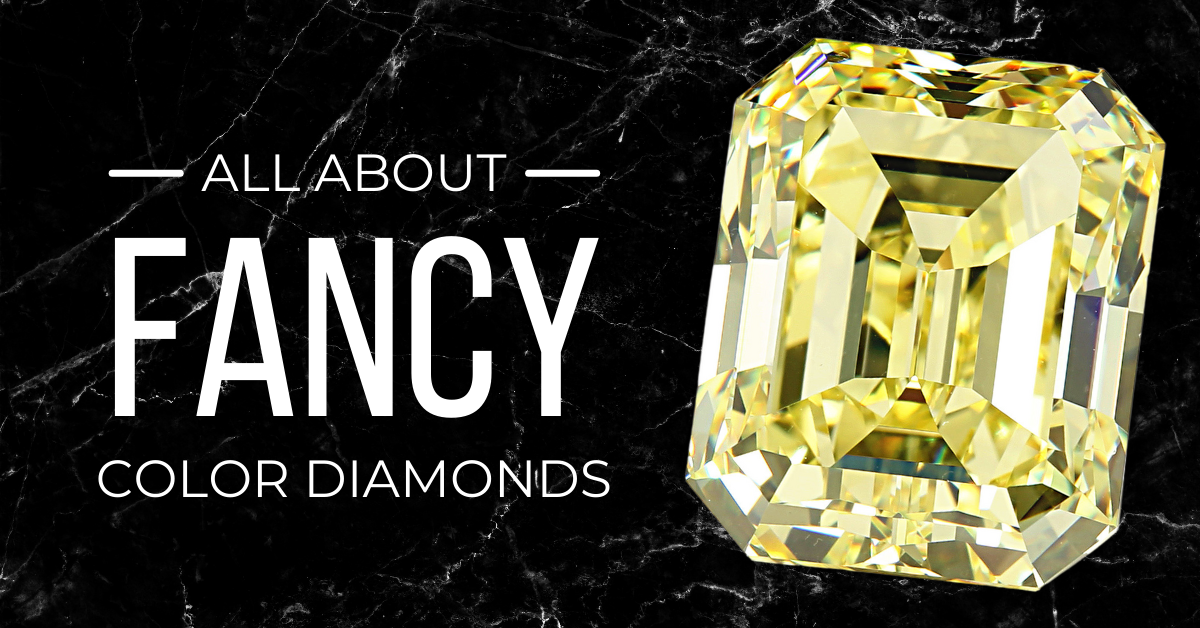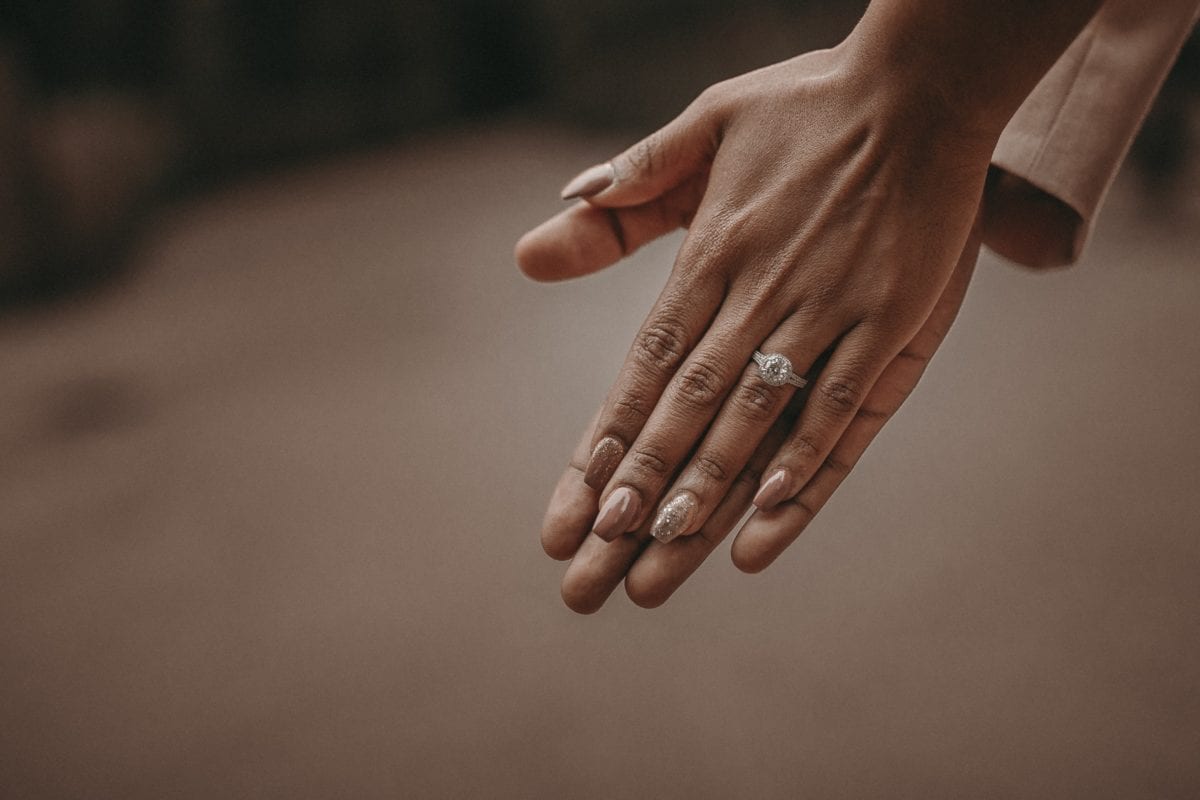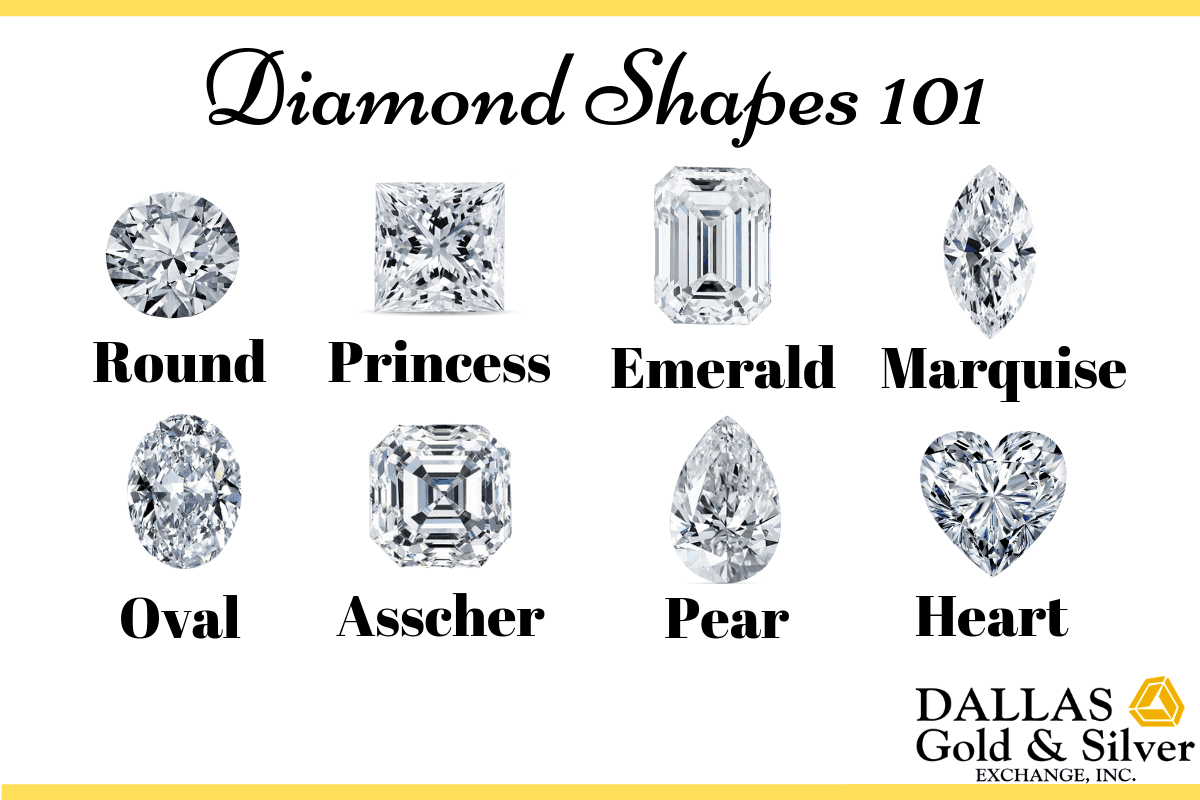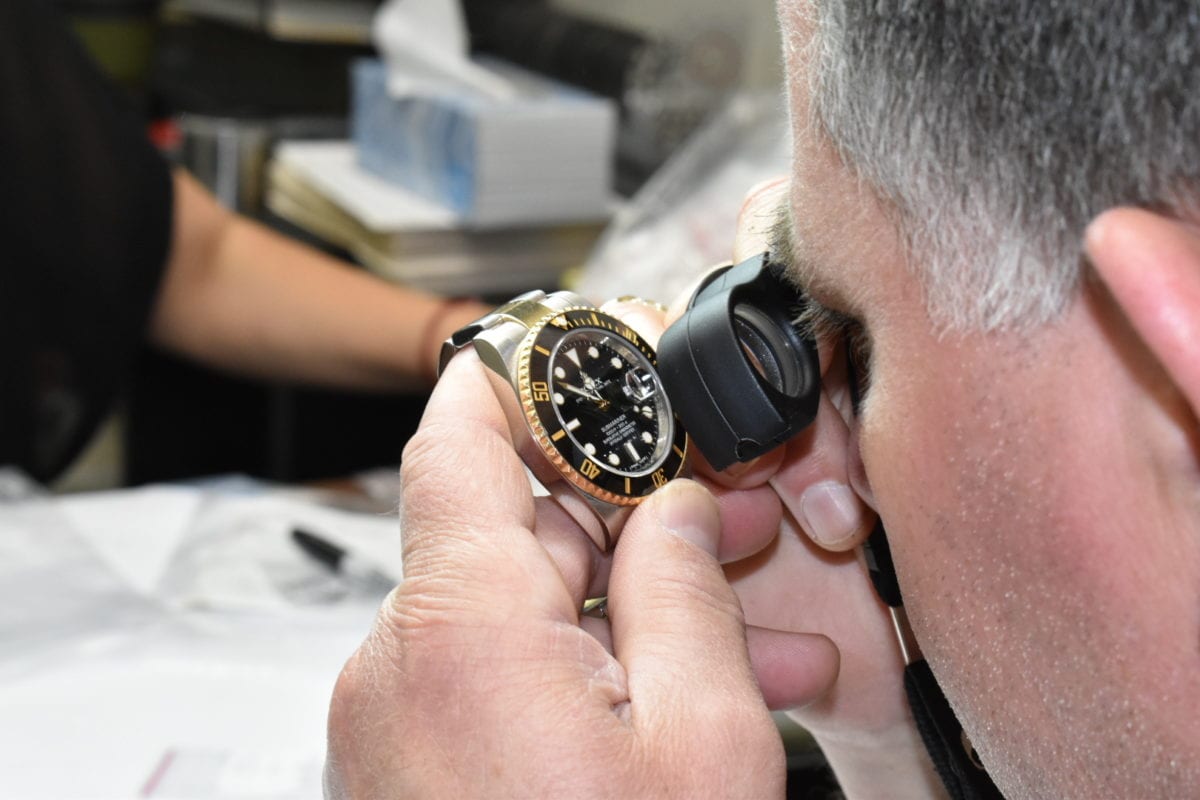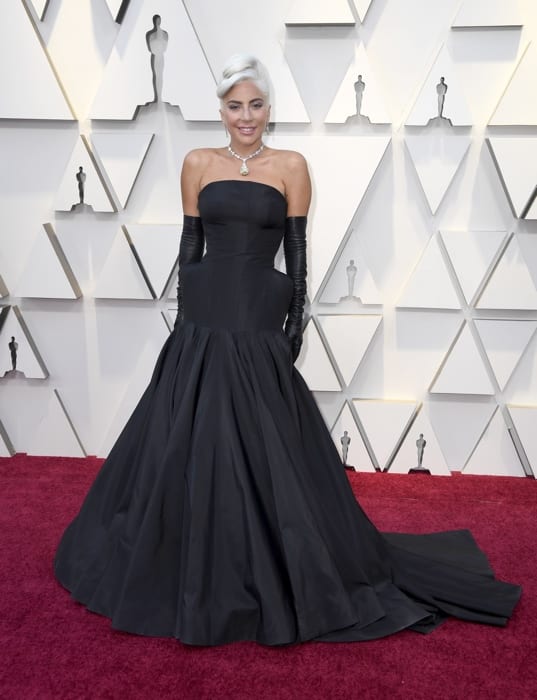When you first think of pawning jewelry or pawn shops, you may think of the TV show “Pawn Stars,” or maybe even a Quentin Tarantino film. However, pawn shops aren’t just an American practice, although more than 30 million Americans use pawn shops yearly. The practice of pawning has been around for centuries, dating back to ancient China. Today, it’s a $14.5 billion industry with 11,000+ pawnbrokers across the U.S. While pawning jewelry or other valuables might seem like a great way to get quick cash, educating yourself on the industry, the process, and its setbacks is essential. Here are some reasons why avoiding pawn shops might be in your best interest and some alternative options to get cash for your jewelry. What Are Pawn Shops, And How Do They Work? A pawn shop (also called a pawnbroker) is a business that loans money to people who bring in valuable items, which they then leave with the pawn shop. The valuables left behind are known as “collateral,” meaning security for the loan provided by the pawn shop. The person can get their valuable item(s) back from the pawn shop if they pay back the money the pawn shop loaned them with interest. However, suppose the person doesn’t repay the loan and interest within an agreed-upon timeline. In that case, the pawnbroker can sell the valuable item to another customer to get back the money the pawn shop loaned. How Do Pawn Shops Make Money? Pawn shops make money in two ways: (1) making personal loans and (2) selling unclaimed collateral items. Providing Personal Loans Pawn shops give out personal loans to individuals who relinquish custody of an item, such as jewelry or electronics. The amount a pawn shop is willing to lend is based on a few different factors: the value of the item, the pawnshop’s inventory at the time of the loan, and demand for the item. Since individuals seeking a pawn loan typically can’t qualify for a traditional bank loan, the risk of default is higher. That’s why pawn shops make loans with substantially higher interest rates than banks typically charge for personal loans. State law governs the amount of interest a pawn shop is allowed to charge. In Texas, the maximum pawn shop rate is 240% APR! That’s high! Reselling Pawn shops’ second primary income source is retail sales on unclaimed merchandise and items purchased outright from individuals. How Much Will Pawn Shops Give For Your Jewelry? If you are considering pawning jewelry, you might wonder how much pawn shops offer. Unfortunately, selling your jewelry to pawn shops guarantees the lowest amount of money in exchange for your items, thanks to the business model we outlined above. While pawn shops tend to offer more money to purchase items outright than to lend against them, it still will only get you about 50% of the value of your jewelry. Even if you need cash in a pinch, there are more lucrative ways to sell and get more out of the value of your jewelry. Alternatives to Pawning Jewelry If you want more money out of your jewelry, there are better ways! It also makes sense to outright sell jewelry you no longer want or need, rather than taking out a loan with a pawn shop. Those interest rates are no joke, especially in Texas! Here are some other, more lucrative, ways to sell your jewelry: Selling Online While this isn’t a great option if you need cash on the spot, you can sell your jewelry online to get more value out of your jewels. eBay is a great, safe option for everyday sellers. If you end up needing to do an in-person transaction, here are some do’s and don’ts to ensure your safety: DON’T agree to meet strangers alone. DON’T give out your address. DO meet in a safe, public place. DO accept cash only. Dallas Gold & Silver Exchange We’ve been around since the 1960s. We’ve stood the test of time by offering customers the most for their jewelry and being a trustworthy source of information. If you don’t believe us, shop around before you come to see us! We’ll give you the best offer and the best experience with our friendly, knowledgeable associates. You can bring your jewelry to any of our metroplex locations during our business hours at your convenience. No appointment is necessary. Want to learn more about the selling process at Dallas Gold & Silver Exchange? Let Loreina walk you through the easy process by clicking the video below!
Tag Archives: diamonds
Jennifer Lopez’s love don’t cost a thing, but she still got a pretty solid engagement ring from Ben Affleck! J. Lo’s newest engagement ring features an 8.5-carat ultra-rare green diamond with white diamonds. Affleck and Lopez were previously engaged in the early 2000s, so this is technically their second engagement and second engagement ring. The celebrity ring is worth a whopping $5-$7 million! If you’re like us, you might want to learn more about green diamonds and how they come to be. Read on to learn more about this beautiful phenomenon! About Green Diamonds The most common diamond colors are clear, black, and brown. Other colors are much rarer; Bennifer’s first engagement ring was a pink diamond, even more rare than the green one she dawns now. Another rare and highly sought-after color of a diamond includes blue. You may have heard of quite a famous blue diamond: The Hope Diamond. Green diamonds result from specific imperfections in the diamond’s structure, most commonly caused by radiation damage. In a clear diamond, every color gets reflected. However, in a green diamond, radiation from nearby uranium or thorium ore can hit a diamond’s carbon structure and cause light to bounce off it differently, creating a green hue. There are reports of green diamonds in nearly every country that produces diamonds. However, according to GIA, some localities consistently dig up more of these valuable stones. These countries include Brazil, Guyana, Venezuela, Zimbabwe, and India. The largest green diamond is the 41-carat Dresden Green Diamond. From the Golconda mines in India, it has a clarity of VS1 and potentially internally flawless, if slightly recut. While every diamond is unique, we love the imperfections that create a specialty color diamond. In fact, we think this imperfect diamond is the perfect choice for the rekindled Bennifer romance! What do you think?
Are you looking for a unique twist to the traditional diamond? Then, we have just the stone for you, no matter what your favorite color is. Read on to learn more about fancy color diamonds! About The Fancy Color Diamond According to GIA, a diamond falls under the category of fancy color if it is yellow or brown beyond the GIA D-Z color grading scale or diamonds that exhibit any other color face-up. This includes colors like red, green, blue, pink, and even black. If you’ve read our post about the four C’s of diamonds, you’ll know that white diamonds typically fetch a higher price. However, the opposite is true of Fancy Color Diamonds. The stronger that color is, the more valuable the gem will be. However, if you want more bang for your buck on a fancy, go for a yellow or brown. They aren’t as “desirable” as some other colors, but they sparkle just as much! Famous Fancies The world’s most famous diamond, The Hope Diamond, is a fancy color diamond. It’s a 45.52-carat diamond, and its color has been most recently described as fancy dark grayish-blue. It has a storied history spanning back to the late 1600s. Famous owners of this gem include Marie Antoinette and Louis XIV. It is on display in the Smithsonian National Museum of Natural History in Washington, D.C today. The Black Orlov diamond is another well-known fancy, with a history as dark as the stone itself. Some say the diamond is cursed — it’s even rumored to be responsible for three suicides throughout the first half of the 20th century. Charles F. Winson purchased the gem in the 1950s and chose to break its (alleged) curse by cutting the diamond into three pieces. The 67.50-carat cushion-shaped diamond is on display in the American Museum of Natural History; however, the whereabouts of the remaining diamonds are a mystery. Fancy Origins Diamonds with fancy colors have traditionally been a small part of the jewelry business, but their popularity has grown over the past few decades. Most come from India, South Africa, and Australia, but other mines in Brazil, Venezuela, and Indonesia produce fancy color diamonds. How are fancy color diamonds made? During a natural diamond’s creation, trace elements such as nitrogen, sulfur, and boron and color diamonds in shades of yellow, green, and blue. However, you won’t find trace chemical elements in pink diamonds. Instead, “the color is caused by a distortion in the diamond’s crystal lattice, created by intense heat and great pressure from all directions after the stone’s formation,” according to the Victoria Museum in Australia. The distortion misplaces many carbon atoms from their normal positions and alters the qualities of light that allows us to observe the stone as pink. Whether you’re looking for a white diamond or a fancy color stone, we have the best selection in DFW. Come see why we’ve stood the test of time at the original Dallas Gold & Silver Exchange.
Are you attracted to the lower price tag of lab-grown diamonds? Think twice before making this particular investment! We all know one of the first steps to the perfect proposal: picking out the diamond ring your partner will swoon for! And our team at Dallas Gold & Silver Exchange is thrilled to help you find the right match. We also want our customers to make the most informed decision possible when it comes to this investment, because it’s a big one! Which is why we’d like to discuss one of the newest trends in diamond-buying — lab-grown diamonds. The difference between natural and lab-grown can still be a bit muddy to consumers and sellers alike. In fact, some companies have landed in hot water for falsely advertising their lab-created diamonds. Here’s what you need to know: Natural diamonds are forged deep within the earth over many years under great pressure and heat. We mine, cut and polish raw diamonds to use in fine jewelry. For years, natural diamonds have been the only choice for that signature engagement ring sparkle. They are still what you’ll see in most engagement rings today. However, some companies have started creating diamonds in laboratories. They create them in one of two ways: High Pressure High Temperature (HPHT) or CVD (Chemical Vapor Deposition). The quality of these lab-created diamonds is increasing with time and reputable diamond-graders (like GIA) even grade them based on the four C’s. However, a professional jeweler can still spot the difference fairly easily. If you’re trying to find the right diamond within your budget, perhaps you’ve considered lab-grown diamonds. After all, their prices are up to 30% lower than their natural counterparts, according to Money Under 30. But, before you pull the trigger, consider your diamond’s resell value. Marriage is a life-long thing; you may want to upgrade your ring one day or the marriage may not last forever (unlike that diamond). That’s why Dallas Gold & Silver Exchange suggests investing in a natural diamond, even if you have to shell out a little more for it now. Natural diamonds hold their value extremely well. The supply of lab-grown diamonds is only going to grow, meaning the demand will inevitably go down, making them a poor investment. If you invest in a natural diamond now, you’ll thank yourself later when you need to resell and get at least 30-50% of your money back. If you go to resell your lab-grown diamond, that number decreases to the point where you’ll get next to nothing back. Still interested in a lab-grown diamond? Let us know. While we don’t typically carry them in our store, we can still help you find one with the best quality for the best price! Now that you’ve thought about how your diamond is made, check out our guide to picking the perfect diamond shape.
So, you’ve decided to start looking for a diamond engagement ring. Good news — you’re in excellent hands! We’ll help you find your dream engagement ring at Dallas Gold & Silver Exchange for the very best price. The first step in creating the perfect engagement ring is choosing the right diamond, starting with its shape. Choosing the diamond shape for your engagement ring is deeply personal, so take your time in making the right decision. To help you along your path to the perfect engagement ring, check out the Diamond Shape Guide from the experts at Dallas Gold & Silver Exchange: Diamond Shape 101 Even if you’re just beginning your journey to your dream diamond, chances are the first thing that comes to mind is its shape. A diamonds shape (not to be confused with cut), refers to the general silhouette of the stone, according to the Gemological Institute of America (GIA). Each diamond shape has their own defining attributes that match different styles and personalities. Round Round diamonds reign supreme as the most popular engagement ring choice. They are a classic option that look gorgeous in a wide variety of settings. It makes them the perfect diamonds to pass down as a family heirloom because they stand the test of time and trends. This shape is well-suited for the woman with traditional style and who keeps their accessories simple and timeless. Princess As the second most popular diamond shape behind round, this diamond fits a wide variety of styles from contemporary to traditional. Like the round diamond, it fits perfectly many different settings. If you are on the hunt for a diamond that is easy on the budget, the princess cut is a great option since the process of cutting is simpler and keeps more of the rough diamond — and, of course, it shines just as brightly as other shapes! Emerald Emerald cut diamonds are a fabulous way to make a statement. They stand out among other cuts due to their mirror-like step facets and their elongated, rectangular shape. Emerald diamonds make wonderful solitaire options, three stone settings or settings with small accent diamonds. This diamond suits a wearer with sophisticated style and can also give an elongated effect to ring fingers. Asscher This royal shape is unique in that it is the first diamond shape to be patented — and it’s no surprise why The Asscher Diamond Company would want this cut all to themselves! This diamond shape is cut with step facets, similar to the emerald cut diamond. The “hall of mirrors” effect with the Asscher cut exudes old Hollywood glamour and royalty, so this is the perfect shape for the bride-to-be that dreams big and has a flair for vintage items Marquise This regal cut is making a comeback — and for good reason! The marquise diamond boasts a brilliant 58 facets and its slim figure can appear larger than its carat weight. Some are even opting to set it horizontally for a modern take on an antique-style shape. Setting it vertically can have a slimming effect, as well. This style is perfect for the recipient with a flair for vintage and elegant style. Oval This stone in particular is having a moment. Oval diamonds are a modern twist on the classic round diamond. Similar to the round diamond, they fit wonderfully in a variety of settings. The elongated shape of oval stones can also make a ring finger appear longer and leaner. This shape is a beautiful option for the bride-to-be with chic and modern style. Pear This unique style resembles a teardrop and, according to the GIA, “blends the best of the round and marquise diamond shapes.” A versatile shape, some romantics like to wear their pear-shaped diamond with the point facing their heart, while others find a slimming effect with the point facing the tip of their fingers. We find this cut gorgeous with a curved band shaped to hug the diamond — it makes a fabulous compliment to a stunning shape. Heart If your bride-to-be is a romantic with an affinity for pink, look no further than the heart-shaped diamond. Living up to its name, the heart diamond embodies the symbol of love and affection and therefore makes a gorgeous engagement or anniversary ring, or even as a special gift for Valentine’s Day. This diamond is cut similarly to the pear shape and features two rounded edges divided by one cleft. Here’s a little-known fact about heart shape diamonds: it is one of the most difficult cuts to create, making it all the more special!
Your jewelry holds a great deal of value — both monetary and emotional. To protect the monetary value of your jewelry, Dallas Gold & Silver Exchange offers you an appraisal on your prized jewelry pieces while you wait. Whether you’re a lifetime jewelry collector or just have a few select pieces you adore, you’ve worked hard to grow your collection! At Dallas Gold & Silver Exchange, we want your jewelry collection to be one of your greatest assets. That’s why we offer accurate jewelry appraisals from our GIA-trained experts to ensure your jewelry’s value for years to come. What is a jewelry appraisal? A jewelry appraisal is the process of assigning monetary value to a piece of jewelry by a certified professional for a specific purpose, such as tax, insurance, or reselling. You’ll receive a clear explanation process and the measurements used along with a signed statement of value from an expert appraiser with your jewelry appraisal. Our GIA-trained experts make sure to appraise your jewelry for the full retail price. When should you get a jewelry appraisal? Dallas Gold & Silver Exchange recommends a jewelry appraisal at least every two years. Because the prices of gold, silver, diamonds, and other gemstones fluctuate, be sure you have your jewelry valued accurately. Additionally, there are many events in which you should get your jewelry appraised, such as if you: Plan to re-sell your jewelry Switch insurance companies Modify a piece (such as a new setting) and change its value Give or bequeath the piece(s) Put the piece(s) into a trust or will Need to show ownership to your insurance company How long does a jewelry appraisal take? It depends on how many items you need appraised and their complexity. On average, an appraisal takes about 30 minutes so you can shop around or relax in our store while you wait. If you’d like to leave your pieces with us during the appraisal, you can rest assured knowing your jewelry is secure and protected. There are plenty of reasons to get your jewelry appraised and zero reasons not to. That’s why Dallas Gold & Silver offers jewelry appraisals at our Dallas location on Preston Road. Bring your beloved items for an appraisal to ensure their value today. You’ll thank yourself tomorrow!
The 2019 Academy Awards hosted hundreds of movie stars, famous directors, producers, and creators. Unsurprisingly, Lady Gaga was one of the most anticipated stars to walk the red carpet — but not for a meat dress or sky-high heels. While she typically rocks daring looks, Lady Gaga was the epitome old Hollywood glamour in an Alexander McQueen gown, matching leather opera gloves, and the famous Tiffany Yellow Diamond around her neck. What’s So Special About The Tiffany Yellow Diamond? The Tiffany Yellow Diamond is one of the largest Fancy Yellow diamonds in the world. It has only been worn a handful of times. Not only is this the first time this diamond has seen the flash of paparazzi cameras at an award show, it is the first time it has been worn by a starlet since 1961. Last worn by Audrey Hepburn in promotional photos for Breakfast at Tiffany’s, Tiffany’s released this diamond from their vault specifically for Lady Gaga. She introduced this diamond to the glitz and glamour of modern Hollywood along with Tiffany & Co. white and yellow diamond earrings as accessories. The stone weighs over 128 carats and was discovered by Charles Lewis Tiffany, founder of Tiffany & Co., 141 years ago in South Africa. “The rarity, beauty and sheer magnetism of the Tiffany Diamond are unprecedented,” said Tiffany & Co. chief gemologist Melvyn Kirtley. The legendary diamond is a brilliant cushion cut with a unique 82 facets — it is said to be priceless. What Does Dallas Gold & Silver Have to Offer? While we don’t quite have a diamond of this size at Dallas Gold & Silver Exchange, we have plenty of diamonds that probably fit within your budget! Come in and see our collection of GIA-certified diamonds for sale whether you are looking to make a splash or for the perfect stone for an engagement ring. We have everything from cushion cuts like the famous Tiffany diamond mentioned, to pear and heart-shaped diamonds.

